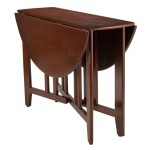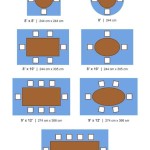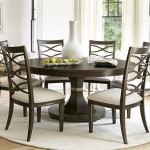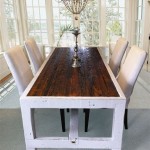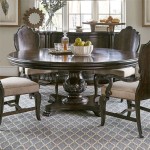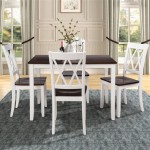Circular vs. Rectangular Dining Tables: Choosing the Right Shape for Your Space
Creating a welcoming and functional dining space is essential for any home. A dining table is the focal point of this area, serving as a gathering spot for meals, celebrations, and casual conversations. When selecting a dining table, one of the first considerations is the shape. Circular and rectangular tables are popular choices, each offering unique advantages and disadvantages. Understanding the pros and cons of each shape can help you choose the best fit for your dining room and lifestyle.
Circular Dining Tables: Fostering Intimacy and Flow
Circular dining tables exude a sense of warmth and intimacy, promoting equal conversation flow among all guests. The absence of corners encourages a sense of togetherness and eliminates the feeling of being seated at the "head" or "foot" of the table. This makes circular tables ideal for small gatherings and families who value close interaction.
Circular tables are also relatively space-efficient. Their rounded edges allow for more flexibility in seating arrangements and can be easily maneuvered around tight corners. This makes them a practical choice for smaller dining rooms or open-plan spaces.
However, circular tables can come with some drawbacks. The lack of corners can limit the number of guests you can comfortably seat, especially for larger gatherings. Additionally, finding chairs that fit perfectly around the curve can be challenging, and depending on the size of the table, the chair placement may leave limited legroom for everyone.
Rectangular Dining Tables: Versatility and Practicality
Rectangular dining tables offer a classic and versatile solution for dining spaces. Their straight edges allow for a greater number of seating options, accommodating larger groups for formal dinners or family gatherings. The rectangular shape also provides a more structured and defined dining area, which can be particularly appealing for larger rooms.
Rectangular tables are also easier to find in a variety of sizes and styles, making them a practical choice for various dining room layouts. Their straight edges also make it easier to fit standard chairs comfortably, while the generous surface area provides ample room for serving platters, dishes, and decorative centerpieces.
However, rectangular tables can feel less intimate than their circular counterparts. The straight edges can create a sense of separation between guests, making them less ideal for smaller gatherings where close interaction is desired. Additionally, rectangular tables can be more difficult to maneuver in tight spaces, especially when paired with bulky chairs.
Considerations Beyond Shape: Size, Material, and Style
Choosing the right dining table involves more than just considering shape. Factors like size, material, and overall style play a crucial role in creating a dining experience that aligns with your individual needs and preferences.
The size of the table should accommodate your typical gathering size, with enough room for comfortable seating and movement. The material should complement your dining room's existing décor, while the style should reflect your personal taste and the overall ambiance you wish to create.
Ultimately, the best dining table for you will depend on your unique circumstances and priorities. By weighing the pros and cons of circular and rectangular tables, along with other important factors, you can make an informed decision that creates a functional and inviting dining space for your home.

Round Vs Rectangular Dining Tables Which Is Better For You Frwd By Cuura Space

Blog House Of Oak
Round Vs Rectangular Dining Tables Which Is Better For You Frwd By Cuura Space

Round Dining Tables Vs Rectangular

Round Vs Rectangle Dining Table

Dining Table Shapes Which Is Best For You Cabinfield Blog

Find Your Perfect 4 Seater Dining Table Size Guide Durian

How To Set A Dining Table Based On The Shape

Which Dining Table Is Best Round Or Rectangular Chelsea Furniture

Dining Tables Round Or Rectangular Homify

